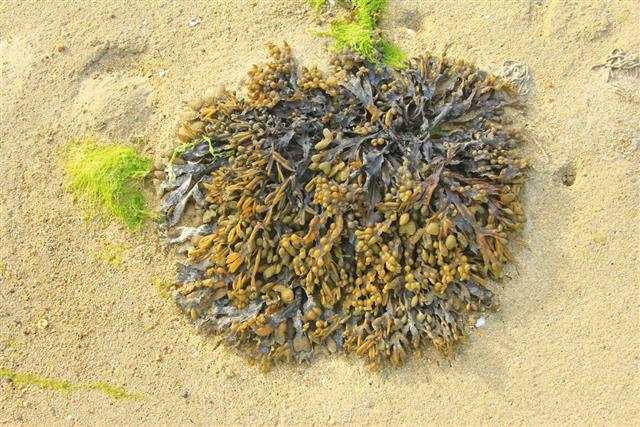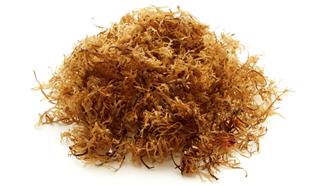
While having sushi, have you ever thought about what seaweed is used in this dish. Find out what are the edible seaweeds used to make these delicious foods, from the article written below.
Edible seaweed is defined as the algae found in water bodies that can be consumed by adding in food preparations. Even though it was initially known to be a major part of the Chinese and Japanese coastal cuisines, it has evolved to be a very popular ingredient in global cuisine as well. There are various types of edible seaweeds that are used for preparing appetizers, main course meals, salads, soups, etc., because of their nutritious nature.
There are three main categories of these edible seaweeds, such as; red, green and brown algae, in which they are further segregated. Each of these seaweeds are rich in specific nutrients like proteins, minerals, vitamins, fibers, etc., thus should be included in your diet once in a week! Therefore, if you are eager to know, what are the names of these yummy seaweeds, read into the coming up paragraphs.
Edible Seaweeds
Even though they look slightly inedible, seaweeds are one of the most nutritious foods of nature. This is because they are vegetables that are rich in all the sea nutrients like iodine, iron, calcium, vitamins B6 and B12, and different proteins. The health benefits provided by these sea greens are a healthy digestive system, functioning of thyroid and strengthening of the immune system against severe infections and diseases. With so many easy ways to maintain your health, all you have to do is choose the seaweed you would like to prepare for your family tonight! Well, you can choose from the edible seaweeds mentioned in the paragraphs below for your information. Take a look.
Kelp
The most commonly found and consumed seaweed is the Kelp, which belongs to the category of brown algae. It is a weed that grows naturally in shallow oceans where the water is rich in plant nutrients and temperatures are about 7 to 14 degrees C. There are several types of Kelp weeds that can be used for consumption, but the most widely used ones are Kombu, Wakame and Arame.
Here is some brief information on these for you.
- Kombu: It is a very nutritious seaweed that is loaded with nutrients like; calcium, alginate, carotene, fucoidan, chromium, germanium, iodine, laminarin, iron, magnesium, phosphorous, mannitol, phytohormones, protein, sodium, potassium, and vitamins such as A, C, D, E, K.
- Wakame: Like the earlier weed, Wakame is also rich in many proteins but is the richest source of calcium. The color is however slightly dark green to brown and thus could be confused to be a green algae. It is very delicious and can be used to make salads and stews with other healthy ingredients.
- Arame: The last type of seaweed that belongs to the Kelp family is the Arame, which is dark brown in color and is available in the dry form. It is known as an iron rich seaweed as it is an excellent source of iron and iodine. It can therefore, be added to various regular dishes on a daily basis.
Nori
Nori is another very popularly consumed seaweed, usually added in the Japanese dish “sushi”. It is naturally sweet and has a meaty flavor which tastes great with the other sushi ingredients. If you are a beginner in eating seaweeds, Nori could be your best choice, as it can be used to prepare foods such as soups, fried with a few vegetables, tossed in salads or simply accompanied with white or brown rice recipes. Nori is also full of nutrients like calcium, iodine, iron, potassium, copper, zinc, vitamins, but it consists of the highest amount of protein among all the seaweeds.
Dulse
Botanically named Palmaria palmata, Dulse is also known as sea lettuce flakes, creathnach, red dulse, etc. It belongs to the red algae category and is found on the northern coasts of Pacific and Atlantic oceans, thus consumed in Ireland, Canada, and European countries. It is a very rich source of fiber, therefore helps in keeping our digestive system healthy and clean. Unlike Kelp, Dulse has a salty flavor and can get a bit chewy because of the water content in the weeds. The nutritional content of Dulse is high quantity of vitamins B6, B12, C, E, A, calcium, iodine, protein, dietary fiber and magnesium, each of which have their individual functions in our body.
Hijiki
This one is available in the dried form and needs to be soaked every time it is to be consumed. After they are re-hydrated, the weeds looks like black noodles and these can be used as decorative ingredients in various coastal food preparations. Hijiki is also a rich source of calcium, algin and dietary fibers, making it a healthy food for developing children. There are many preparations you could use Hijiki in such as in salads and stews, the dried form in tea, and as a snack whenever you are hungry!
Other types of edible seaweeds that can be added to your diet are:
- Sea Lettuce
- Bladderwrack (Fucus vesiculosus)
- Carrageen moss (Mastocarpus stellatus)
- Carola (Callophyllis variegata)
- Spirulina
- Laver (Porphyra laciniata/Porphyra umbilicalis)
- Irish moss (Chondrus crispus)
With these edible seaweeds, I hope you have found a variety of choice for some new additions in your diet. So, go ahead and prepare something really delicious with these seaweeds for your friends and family tonight.










